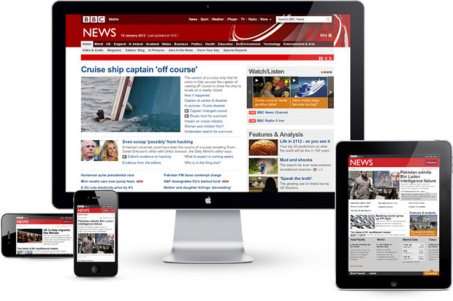Multi-platform media and the digital challenge – an analysis

The UK media sector's rapid expansion onto new, multiple digital platforms in the face of tighter financial budgets has encouraged more emphasis on strongly branded and high impact content, according to University of Glasgow research which was funded by the Economic and Social Research Council (ESRC).
But while the transition has offered what is in some ways an improved experience for audiences, it has also contributed to potential standardisation and uniformity of content, the researchers have found.
A major three-year study into "Multi-platform media and the digital challenge: Strategy, Distribution and Policy", led by Professor Gillian Doyle, suggests that the sector's transition from a single platform to a multi-platform environment has been accompanied by tendencies to recycle a narrow pool of material and may also have increased the risk of a blurring of the lines between editorial and commercially-driven content.
"The apparently miraculous way that media companies have managed, on relatively fixed resources, to multiply the range and volume of their content outputs is explained by the fact that what they are doing, at least some of the time, is recycling the same output across platforms," says Gillian Doyle, Professor of Media Economics and Director of the Centre for Cultural Policy Research at the University of Glasgow.
"Findings gathered from interviews also indicate that the journey to a multi-platform approach has created pressure within media companies towards focusing on a relatively small number of high-profile stories and brands because this is the most practical way to meet audience and advertiser demand for multi-platform output from within constrained budgets," she adds.
One interviewee, formerly from MTV UK, told the research team that his broadcast company's strategy was "doing less but being more cost effective because you're able to sweat that content across so many different platforms, and you're getting longevity out of it".
The switch to a multi-platform approach has the advantages of offering new forms of audience engagement. Use of data gathered from the digital return path can provide extensive and valuable feedback on audience preferences and tastes while also enabling closer relationships to be forged, thus building brand loyalty, the research team reports.
In the television industry, for example, the adoption of a multi-platform outlook has seen the development of content-related websites, video on demand services and other digital offerings; in newspaper and magazine industries, production increasingly takes place in newsrooms that are converged or "fully integrated", with staff creating products intended, from inception, for distribution on print, online and mobile platforms.
But the study also finds that media companies have encountered some difficulties in identifying exactly how best to use the "tidal wave" of return path data now available to them.
"An interesting finding is that, across the board, most media companies whether engaged in newspaper publishing, television broadcasting or magazine publishing are very challenged by the question of how best to interrogate and exploit that data," it adds.
A potential problem for media businesses, according to the study, is that "digital delivery presents ever more effective ways of potentially obviating or making redundant the core function through which media companies have traditionally added value i.e. by performing an editorialising function and making judgements about what constitutes an attractive parcel of content".
This finding leads to the warning: "To the extent that, as part of the process of adapting to digital delivery, a long-standing reliance on human judgement is eroded by ever-greater use of return path data to support intelligent responsive produce design, media organisations may be in danger of undermining their core raison d'etre and, in turn, their own long-term viability."
A further problem identified is that many newspapers and magazines have yet to alter their workflows so that they respond timeously to return path data. Instead, production is still heavily dominated by print cycles, with many journalists tending to post copy just as the print deadline approaches.
"Despite increased investment in digital delivery, for many newspaper and magazine titles, content on digital platforms is generally not being refreshed with the sort of frequency needed to ensure that audiences will be keen to take out digital subscriptions."
Professor Doyle adds: "The experience of our sample group suggests that many leading newspapers, broadcasters and magazine publishers are still struggling to achieve the high level of integration between content production staff and digital specialists needed to promote innovation and, in turn, the development of effective new business models for the digital multi-platform era."
The project team conducted extensive research focusing on organisations (and related media brands) that included the following: in newspapers - Telegraph Media Group (The Daily Telegraph and Sunday Telegraph), News Corporation (The Times) and Pearson (Financial Times); in magazines, Hearst UK (Elle UK) and Future (Total Film); in television, the BBC (BBC1/3) and UKTV and ITV. Professor Doyle is Principal Investigator on the project; her Co-Investigator is Professor Philip Schlesinger.
The project, said Professor Doyle, had resonance with the media industry but was also important in terms of policy-making.
"We should be thinking in terms of creating an environment in which our own indigenous industries can thrive economically at a time when there is a lot of global competition and international predatory interest. We want a policy environment that is supportive of indigenous companies," she added.
Provided by University of Glasgow



















